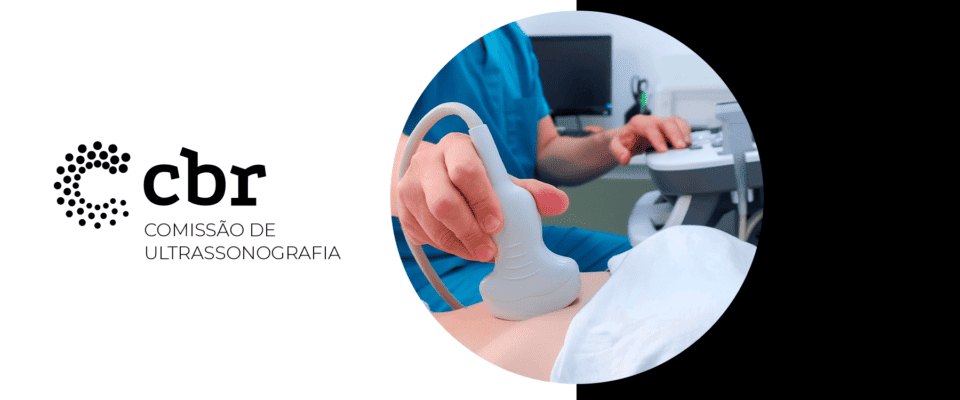“One of the paths for valuing the professional class is the search for total quality”, declared Dr. Aldemir Humberto Soares, who was president of CBR at the time of creation of the Seal of Quality in Ultrasound

By Leandro Conceição
The Quality Certificate in Ultrasound from the Brazilian College of Radiology and Image Diagnosis (CBR) was created in 2002. The emergence of a Commission focused on evaluating the quality of ultrasound equipment came in the wake of the positive results obtained with the pioneer Selo de Mamografia, in 1992, and in parallel with negotiations for the implementation of the Commissions for Magnetic Resonance and Computed Tomography — all of whose history we covered in previous reports —, during the tenure of Aldemir Humberto Soares as president of the College.
The CBR's National Ultrasound Commission (CNUS) was established a year after a report by TV Globo's "Fantástico" showed medical errors caused by the poor quality of the equipment. “A year ago, CBR was giving an interview to Rede Globo de Televisão about Ultrasound, today it launches the Ultrasound Qualification Commission to issue a seal of quality and prevent medical errors like those disclosed in the program 'Fantástico' from happening again” , said an editorial in the June 2002 CBR Bulletin, signed by Renata Donaduzzi, with the title “The continuous battle”. The following month, the same bulletin highlighted: “Ultrasonography Qualification Commission is ready”.
“The Brazilian College of Radiology and Image Diagnosis believes that one of the ways to enhance the professional class is the search for total quality”, declared Dr. Aldemir Humberto Soares, then president of the College, in the CBR Bulletin of May 2004. “With services and clinics proven to be evaluated by a team of qualified professionals, the CBR can attest to the user that his exams will be carried out by specialists in the area, with equipment of high technology calibrated and prepared to carry out the necessary procedures for an accurate diagnosis”, added Dr. Aldemir.
In the June 2003 CBR Bulletin, Dr. Antonio Carlos Matteoni de Athayde, then vice-president of the Northeast region of CBR and member of the CNUS of CBR, reported the hard work to promote Quality in the area throughout the country:
“We have had very pleasant experiences during our wanderings around Brazil, getting to know cities that we certainly would not have had the pleasure of visiting if we had not put into practice in our commission the inspection item that we believed to be one of the most important and our day-to-day activities. it has shown us that we have chosen the correct path, despite the fact that it is often arduous and tiring.
The first survey was carried out in the city of Teixeira de Freitas, which is approximately 900 km from Salvador and 250 km from Porto Seguro, a city that could be reached by plane. We started our adventure by air on Thursday afternoon, leaving Salvador, as there was no flight on Friday at a time that would allow us to arrive in Porto Seguro and from there continue our journey to Teixeira de Freitas, avoiding the road at night and arriving at time to find the clinic open. We stayed overnight in Porto Seguro and the next day we went there early.
Arriving in Teixeira de Freitas approximately after 2 hours and a half, being received by the colleague in an extremely receptive manner, however perplexed, as he did not believe that any member of the commission would go to that city so far from the big centers. At that moment, we were absolutely sure, later shared with our colleagues on the commission, of the importance of our work and the credibility of the quality seal as a result of the inspections, above all because we were willing to reach any point in our country, however distant it might be, it was then given the departure (…).”
After two decades, the Ultrasonography Commission continues to fight to promote and raise awareness about the importance of quality. “I believe there is still a lack of awareness in the sector. However, the number of requests [for the Seal of Quality] has been increasing over the years. The tendency is for this number to increase even more, as the services have realized the advantages of being accredited by a serious institution like the CBR”, says the CNUS coordinator, Dr. Nicola's Harley.
“The seal is a guarantee that the clinic or hospital has been submitted to the CBR evaluation, and that the institution has evaluated and certified the technical quality of the images and test reports, considering them adequate to its rigorous standards. It is an important differential for diagnostic imaging services”, adds Dr. Harley.
Patients, doctors and clinics benefited

The coordinator explains how the work of the Ultrasound Commission is carried out: “It starts with the sending of the material by the service that seeks the Seal, as this material needs to be evaluated in order to know if it is suitable for the process. After this first part, comes the evaluation itself, where each CNUS member needs to know the evaluation rules and know how to apply them correctly, so that there is no error in the process, which can lead to disapproval or approval in the wrong way. . Even so, the evaluations are submitted to a second reading”.
doctor Harley de Nicola makes a point of emphasizing that the search for quality benefits patients, physicians and clinics. “The CBR certification program is of great importance to the diagnostic imaging environment. The way in which the certification is carried out, with information about the equipment used, images and the clinical staff, increases the quality and safety of patients undergoing examinations. The benefit is also felt by requesting physicians and health plans. It is important to emphasize that since its inception, the way of evaluating all diagnostic methods has been constantly improving.”
Read too:




